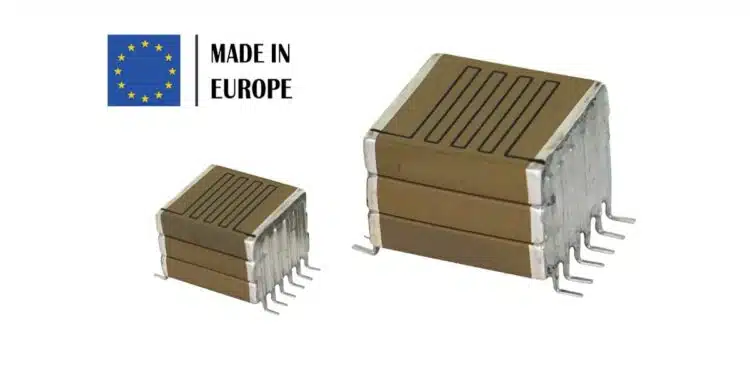Exxelia offers the industry unique CF/CFS series of ceramic MLCC high voltage, high power pulse capacitors with integrated bleed resistor, manufactured in Europe.
For applications where precision, reliability, and performance are non-negotiable, choosing the right components is crucial.
Exxelia, a leader in high-performance electronic solutions, is proud to offer the only high voltage pulse ceramic capacitors with integrated bleed resistor manufactured in Europe.
Designed and produced in France, the Pulse CF/CFS series ensures high-energy density and high-rate of charge/discharge capability, making it the preferred choice for ignition applications of defense, space launch systems, and oil & gas applications.
Excellence in Pulse Applications
Pulse capacitors are essential in systems requiring rapid charge and discharge cycles, ensuring efficiency and reliability in high-power applications. Exxelia’s fuze CF/CFS capacitors offer:
- Superior energy density for compact and efficient designs.
- Exceptional reliability in extreme environments.
- High voltage capability tailored for mission-critical applications.
Specifications:
- Dielectric Material: C4xx dielectric, offering a combination of high dielectric constant and stability.
- Voltage Range: From 500V to 10,000V, making them suitable for high-power applications.
- Capacitance: From 27pF to 15µF, ensuring adaptability across various designs.
- Temperature Range: Operational from -55°C to +125°C.
- Insulation Resistance: ≥20,000 MΩ for capacitances up to 25nF.
- Case size: from 1812 to 16080 or custom designed to your needs.
Innovation at The Heart Of Manufacturing
Beyond their superior electrical performance, these capacitors integrate Exxelia’s Micropen electronic printing technology. This optional feature allows direct printing of a bleed resistor from 1kohms to 1Gohms per square on the capacitor, effectively creating a two-in-one component that optimizes space and performance.
By choosing Exxelia’s fuze CF/CFS series, engineers benefit from a product Made in France, ensuring shorter lead times, reduced dependency on foreign suppliers, and compliance with European standards.































